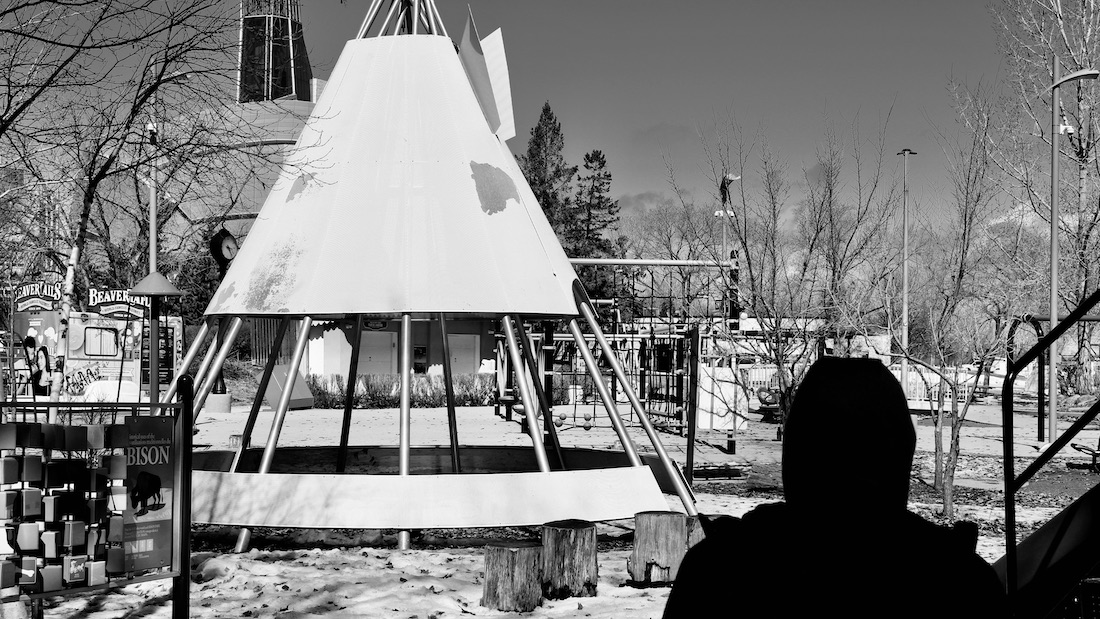The Forks is made for everyone
By Tony Eetak
The playgrounds and gathering spaces at The Forks are layered with meaning—designed not just for function, but for story. You can feel that in the shapes they choose: tipis made of metal and concrete, climbing structures that echo trade routes, gathering circles cut into the earth or raised with wood and steel. It’s not just about kids playing; it’s about creating spaces where cultural memory and movement intersect. The metal tipi, for example, isn’t meant to be a replica—it’s a gesture. A nod to histories that still shape the present, even in play.
There’s a deliberate hybridity in these spaces. Materials like steel and plastic mix with organic forms like carved logs and natural seating rings. This mix mirrors the city itself—industrial and organic, Indigenous and urban, constantly changing but rooted. These are spaces that invite both movement and pause. A child can climb, swing, or run, while an elder might sit and watch from a cedar stump or bench. They’re built to be shared by everyone, not just for recreation, but for reflection, dialogue, and storytelling.






